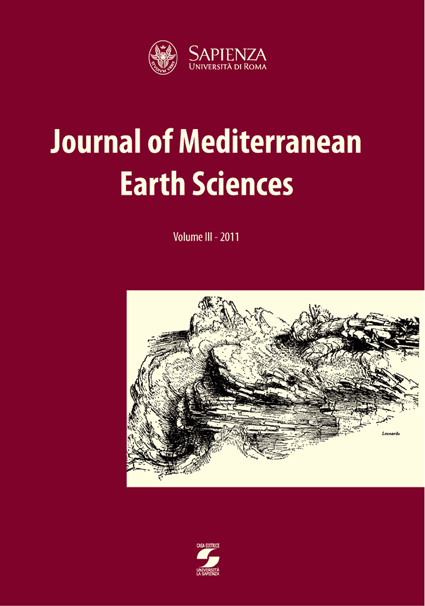New data on the Tuscolano-Artemisio phase of the Alban Hills: some insights on climatic conditions
DOI:
https://doi.org/10.3304/JMES.2011.003Abstract
A pyroclastic flow 14 m thick embedding well-preserved wood remains has been retrieved at a depth of 120 m from a borehole drilled near the village of Lanuvio, about 9 km south of the Lake of Albano. 40Ar/39Ar analyses on a leucititic lava flow immediately overlying the drilled ignimbrite, gave an age of 485 ± 1ka. Facies and age constraints are consistent with pyroclastic products of the first Tuscolano-Artemisio phase. The new findings presented here contribute toward reconstructing the early eruptive history of the Alban Hills. New chronological data further define the time interval and spatial distribution of the extrusive phase, coinciding with the transition from the first to the second Tuscolano-Artemisio phases. It is also suggested that the pyroclastic products of the Latium region (Rome) with their embedded wood remains, represent an important “archive” of arboreal expansion, allowing better definition of the climatic conditions characterizing interglacial stages 13-15 of the Oxygen Isotope Curve.Downloads
How to Cite
Laura Corda, P. B. (2014). New data on the Tuscolano-Artemisio phase of the Alban Hills: some insights on climatic conditions. Journal of Mediterranean Earth Sciences, 3. https://doi.org/10.3304/JMES.2011.003
Issue
Section
Articles
License
The submission has not been previously published, nor is it before another journal for consideration (or an explanation has been provided in Comments to the Editor).


